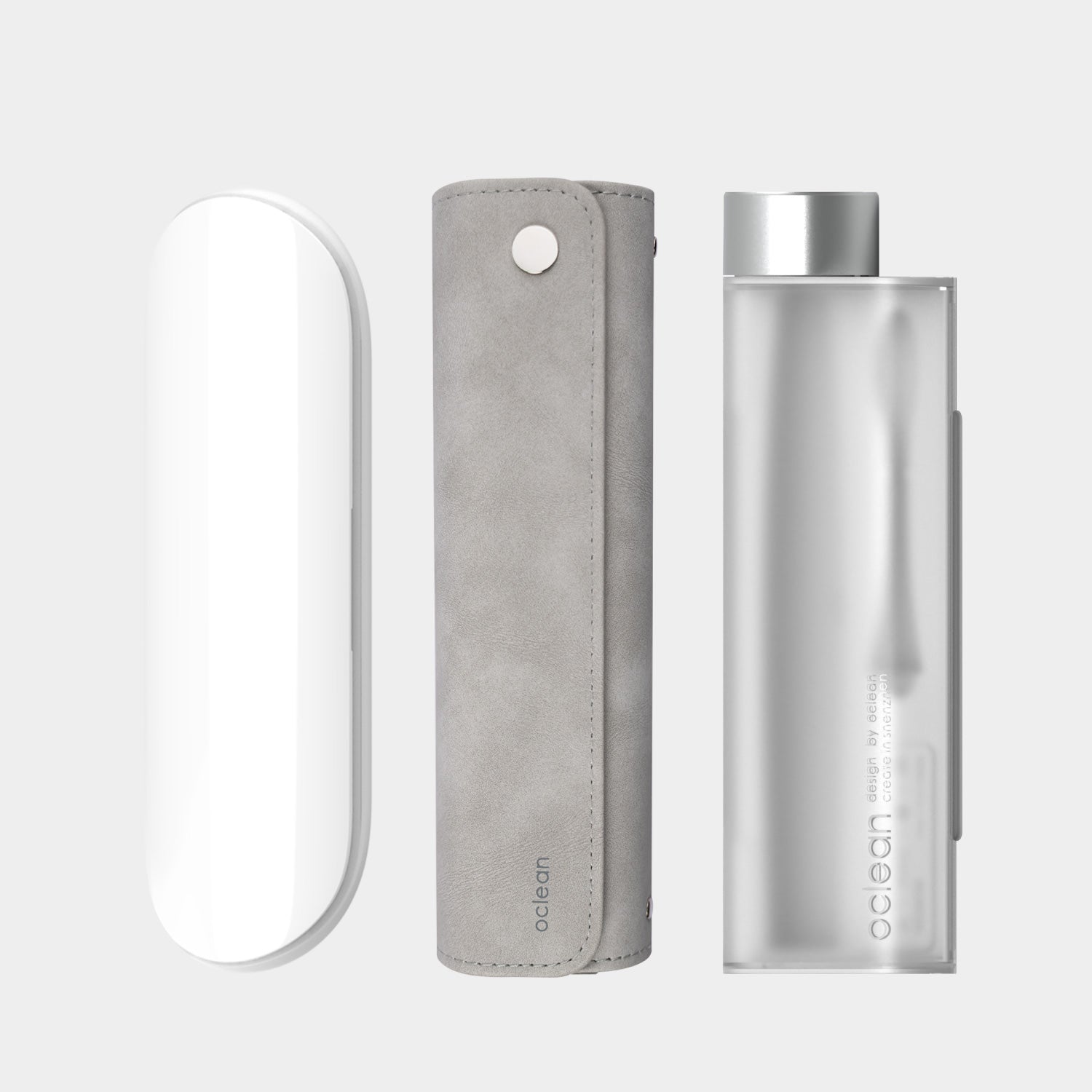Cleaning Your Toothbrush Holder: All You Need To Know
Have you cleaned your toothbrush holder recently? Did you know the container that holds your toothbrush is one of the dirtiest surfaces in your bathroom?
In a survey published by the National Sanitation Foundation (NSF), the toothbrush holder took the spot for the third most germ-infested household item, second to the kitchen sink. Although kitchen sinks are frequently scrubbed clean, toothbrush holders are often neglected when individuals begin to clean their bathrooms.
Let’s discuss all you need to know about cleaning your manual or electric toothbrush holders for a healthier brushing experience.
Why Do You Need To Clean A Toothbrush Holder?
Ever wondered what the gunk on the bottom of a toothbrush holder is? That awful smelling, black or brownish-looking substance is actually a collection of bacteria and fungi that has grown to a large size. These germs include Staphylococcus aureus (Staph), Coliform bacteria (that include Salmonella and E. coli, indicating possible fecal contamination), and yeast collection.
Where did this mold come from, you ask? Bathrooms are considered to be extremely humid. The steamy and moist environment is perfect for bacteria to grow and thrive. After using a toothbrush, we might wipe the toothbrush clean with water, but placing it in a toothbrush holder allows that water to drip down to the container, which further helps these pesky microorganisms to grow and multiply.
The worst part is that the handy toothbrush, the tool we use in our mouths, directly contacts these colonies of bacteria and fungi. Cleaning a toothbrush holder is an undeniably necessary household chore unless you want these germs to enter your mouth.
What Happens If You Do Not Get Rid Of the Mold?
Molds are known to cause a plethora of allergic reactions ranging from itchy skin to breathing issues. If an individual already has respiratory issues, molds will potentiate the problem, causing more distress. This irritant can also cause red eyes and a fever, all symptoms that you wouldn’t guess were coming from your toothbrush holder.
How Frequently Should You Clean Your Toothbrush Holder?
A toothbrush is used twice every day. This means the toothbrush holder is wet at least twice daily, providing a favorable breeding ground for all sorts of germs. Ideally, the toothbrush holder should be cleaned every week to ensure no mold develops at the base.
How to Clean a Toothbrush Holder
Fortunately, cleaning a toothbrush holder is quick and simple. All you need is hot water, dishwashing liquid, a microfiber cloth, and a clean kitchen sink. Put on your dishwashing gloves and follow these simple steps:
Step 1: Fill the kitchen sink with hot water (remember to wear your dishwashing gloves to avoid possible burns!).
Step 2: Place the toothbrush holder in hot water for at least 10 minutes. This softens all the muck at the base of the holder.
Step 3: Drain the hot water and wipe the sink thoroughly with the microfiber cloth.
Step 4: Using dishwashing soap, wipe all the parts of the holder. If you have a pipe cleaner or any small brush that can reach the base, use it to scrub the holder thoroughly. The dishwashing soap sanitizes the holder.
Step 5: Use another microfiber cloth to dry the holder.
Step 6: Place your toothbrush back into its holder and enjoy a cleaner brushing experience.
How to Clean Your Smart Electric Toothbrush Holder
Did you know your electric toothbrush holder needs to be cleaned as well? This holder can also serve as a breeding ground for many troublesome microorganisms. Cleaning an electric toothbrush holder is almost the same as cleaning a manual toothbrush holder with the following steps:
Step 1: Unplug the electric toothbrush base. This will prevent water from potentially damaging the power lines and dangerous electric shocks during cleaning.
Step 2: Mix dishwashing liquid with water.
Step 3: Use a microfiber cloth to wipe the sides of the device.
Step 4: Mix one part vinegar and one part water in a clean bowl.
Step 5: Place your electric toothbrush cover in the vinegar solution for 15 to 30 minutes.
Step 6: Remove the toothbrush covers and rinse under running water.
Step 7: Use a hair dryer to dry the covers. Remember not to set the hair dryer in a too high setting.
Step 8: Wait till the tool is completely dry before plugging it back in.
Oclean offers waterproof smart toothbrush, so you do not need to worry about damaging the tool during cleaning as long as you dry the toothbrush properly after cleaning. Its waterproof features mean you can even use it safely in the shower if you’re getting late for work. Completely submerging the toothbrush in water, however, is not recommended. You can even ditch a holder altogether by opting for a magnetic wall mount, which is a pragmatic way of keeping the toothbrush off a wet bathroom counter.
How To Up Your Cleaning Game: Use a Toothbrush Sanitizer
Did you know you can even reduce the number of bacteria on your toothbrush by using a device known as a toothbrush sanitizer? This tool is simply a container or case where you store your toothbrush, which does the cleaning job for you. Oclean’s UV toothbrush sanitizers use electromagnetic waves to target the vexatious bacteria on your toothbrush without causing any damage to the toothbrush itself.
In Conclusion
Toothbrush holders are often the dirtiest but most ignored surfaces during cleaning. A little dishwashing soap, hot water, and vinegar can go a long way. We must frequently clean our toothbrush containers to reduce the chances of disease-causing mold infestations. If you are eager to find a sophisticated way of sanitizing your toothbrush, Oclean’s toothbrush sanitizer may be the perfect solution for you.
*Cover image from Freepik@atlascompany, we will delete it if constitutes infringement *
Related Readings:
Can You Bring an Electric Toothbrush on a Plane
How Many Calories Are in Toothpaste
What Happens if You Swallow Toothpaste
Are Charcoal Toothbrushes Safe














































































